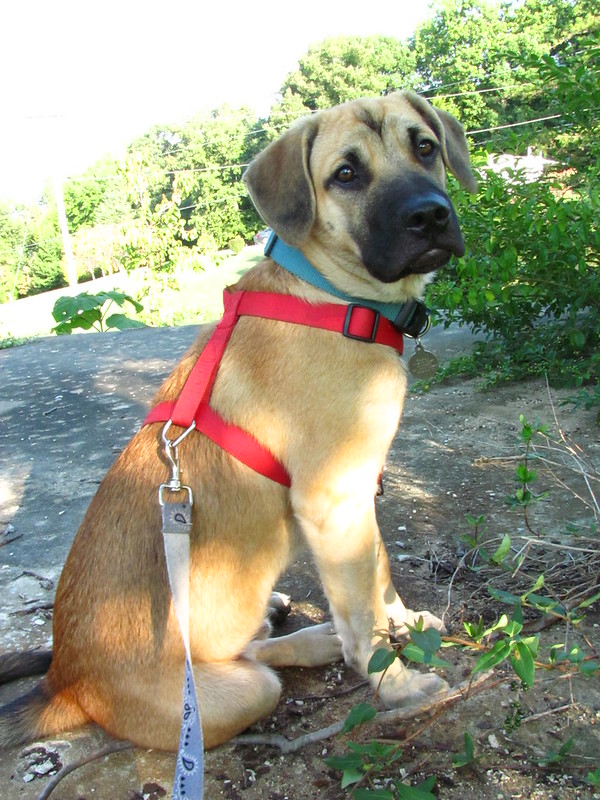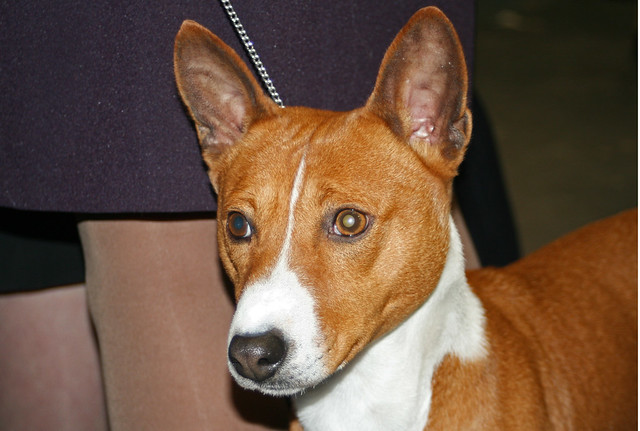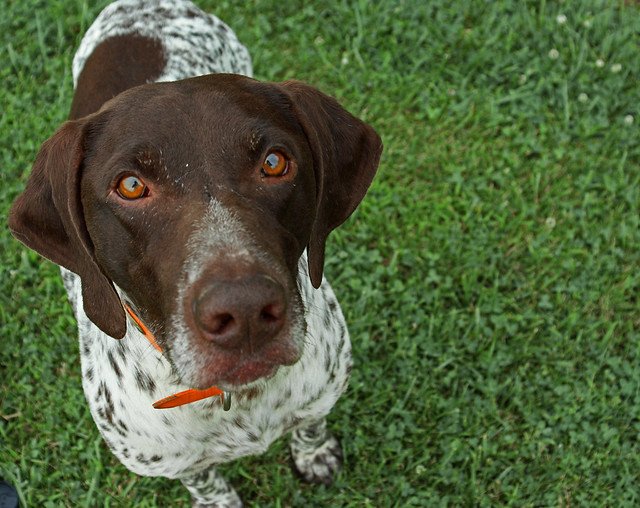(BRUSSELS GRIFFON Dog Breed Profile)
 |
| Brussels Griffon weights (Photo credit: Wikipedia) |
Description:
There are actually three types of Brussels Griffon:
There are actually three types of Brussels Griffon:
Belgian Griffon
Brussels Griffon
Petit Griffon.
All are considered to be toy dogs with a shoulder height of 7 to 8 inches and a weight of 6 to 12 pounds. The stop of the dog is very pronounced and the muzzle is short. The tail of the Griffon is usually docked and the ears can either be clipped or left natural. The coat of this dog comes in two varieties, smooth and rough. The rough coated Griffon has a wiry, longish coat with distinctive facial hair. The coat of the smooth is short and glossy. The Griffon will generally live to be 12 to 15 years old. This dog is also known as the Petit Brabancon and the Griffon Bruxellois.
History:
The first artistically rendered appearance of the Brussels Griffon is in the painting 'The Arnolfini Wedding' by Jan Van Eyck. This masterpiece was created in 1435 and shows the Griffon looking confidently out of the painting. The Griffon was used as a ratter in stables in its native Belgium and it is thought that the original dog was crossed with the Affenpinscher, the Pug, and the King Charles Spaniel to arrive at the dog with which we are familiar today.
The first artistically rendered appearance of the Brussels Griffon is in the painting 'The Arnolfini Wedding' by Jan Van Eyck. This masterpiece was created in 1435 and shows the Griffon looking confidently out of the painting. The Griffon was used as a ratter in stables in its native Belgium and it is thought that the original dog was crossed with the Affenpinscher, the Pug, and the King Charles Spaniel to arrive at the dog with which we are familiar today.
Temperament:
The Brussels Griffon makes an excellent companion dog and is cheerful and confident. It loves to cuddle up with its favorite person and will expect plenty of attention. This small dog sometimes needs to be reminded of its size when trying to dominate dogs much larger than it is. The Brussels Griffon tends to bond strongly with one person and should be considered a one person dog. As such, it is probably not a suitable dog for homes with children, especially small ones. However, the Brussels Griffon does get along well with other household pets.
The Brussels Griffon makes an excellent companion dog and is cheerful and confident. It loves to cuddle up with its favorite person and will expect plenty of attention. This small dog sometimes needs to be reminded of its size when trying to dominate dogs much larger than it is. The Brussels Griffon tends to bond strongly with one person and should be considered a one person dog. As such, it is probably not a suitable dog for homes with children, especially small ones. However, the Brussels Griffon does get along well with other household pets.
Health Issues:
As with all short-faced breeds, the Brussels Griffon can suffer from breathing problems. It should also be kept as cool as possible when the weather is hot. This breed can also have problems with their eyes, such as cataracts. The Griffon often experiences trouble with whelping and caesarian sections are often called for.
As with all short-faced breeds, the Brussels Griffon can suffer from breathing problems. It should also be kept as cool as possible when the weather is hot. This breed can also have problems with their eyes, such as cataracts. The Griffon often experiences trouble with whelping and caesarian sections are often called for.
Grooming:
Although the smooth coated Brussels Griffon does not need more than a weekly brushing to keep the coat in good condition, the rough-coated dog will need rather intensive grooming. The dog should be brushed every day to keep mats and tangles from forming. Some people prefer to clip the rough coat shorter for ease of care. It is sometimes necessary to trim the hair on the hindquarters for sanitary reasons.
Although the smooth coated Brussels Griffon does not need more than a weekly brushing to keep the coat in good condition, the rough-coated dog will need rather intensive grooming. The dog should be brushed every day to keep mats and tangles from forming. Some people prefer to clip the rough coat shorter for ease of care. It is sometimes necessary to trim the hair on the hindquarters for sanitary reasons.
Living Conditions:
As the Brussels Griffon is exclusively a companion dog, it belongs in the house or apartment with the human with whom it has bonded. It is quite active and playful indoors and will get much of its exercise in this fashion. The Brussels will appreciate a walk every day, however, and should be given the opportunity to stretch its legs. This dog is unable to live outside and as it can suffer from heat stroke easily, should be kept out of the sun during hot weather.
As the Brussels Griffon is exclusively a companion dog, it belongs in the house or apartment with the human with whom it has bonded. It is quite active and playful indoors and will get much of its exercise in this fashion. The Brussels will appreciate a walk every day, however, and should be given the opportunity to stretch its legs. This dog is unable to live outside and as it can suffer from heat stroke easily, should be kept out of the sun during hot weather.
For more information on different Dog Breeds, Dog Training and Teacup Puppies for sale including Yorkies, Chihuahuas, and Morkies please visit our websites below.
Brussels Griffon Puppies - Puppies or Dogs [http://www.puppies-or-dogs.com]
Article Source: EzineArticles
|







